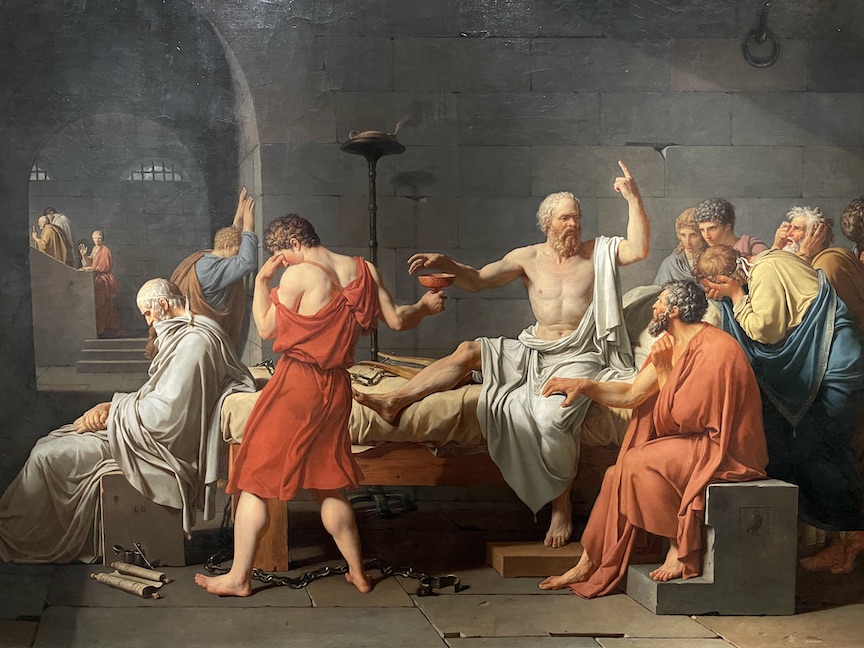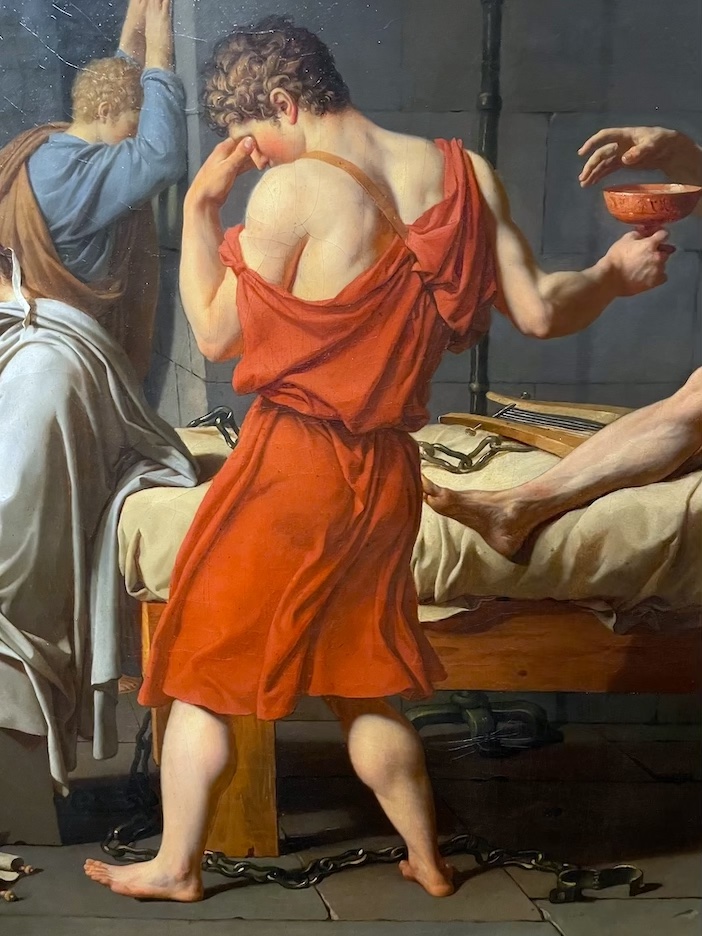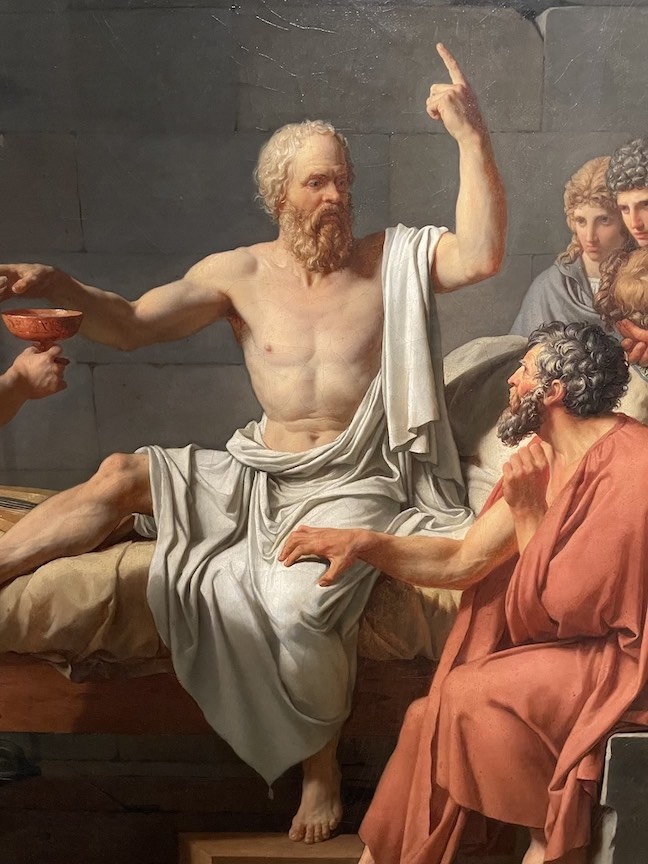Happy or Sad? Our posture paints a portrait.
People are fascinating creatures, and I spend a lot of time observing them on my walks around New York City. But it isn’t really the people I’m observing so much as how their posture paints their feelings. Often, I’ll pass someone and think, “I know just how that person feels right now.” Although it’s dicey to imagine I can grasp the mood of a total stranger by glancing at their movement patterns, there is an intimate link between our physical attitude and our emotions. My training and experience as an Alexander Technique teacher has taught me that our posture is a very direct form of communication. And postural communication has a very specific – and culturally conditioned – emotional grammar that literally shapes our well being. We learn to embody and interpret that grammar in Alexander Technique lessons.
It is our common understanding – our culture – that certain physical attitudes correspond to specific emotional states. People who feel depressed often express their depression by hunching over, moving lethargically and lowering their gaze to avoid eye contact. By contrast, happier people tend to be more upright and lighter in their step, with their eyes up and their gaze available to others. Meanwhile, illness, fatigue and anxiety have their own distinctive (and often harmful) postural signatures. Of course, some people convey more than one emotion simultaneously with their posture and movements. Our postural-emotional cues are critical to the way we perceive and communicate with each other, in both life and art.

All images in this article are public domain, courtesy of The Metropolitan Museum of Art, New York, New York
A Master Paints Our Feelings
I saw a vivid illustration of how our posture paints our feelings during a recent visit to the Metropolitan Museum of Art. The focus of my visit to the Met was an exhibition of drawings by Jacques Louis David. The drawings in the show were beautiful, but one large painting particularly caught my eye. This canvas, “The Death of Socrates,” was painted by David in 1787, when he was 39 years old. The artist spent at least five years preparing for, and completing, this masterwork.
What I find intriguing about David’s painting is his use of posture to express the inner state of each person he depicts. The physical attitudes of the thirteen people shown express moods ranging from calm resignation to unshakable determination to despondency. Three of the figures have particular resonance in this dramatic scene; I’ll discuss each figure in turn to glean information relevant to our own postural habits and choices.
Plato: a Dignified Collapse… or is He Napping?

The first figure I’d like to discuss is that of Plato. According to the Met’s curatorial notes on this painting, Plato was absent from the death of Socrates. In this work, then, David has taken artistic license with historical facts to make a dramatic point. But then, what is that point?
We immediately notice that Plato is slumped over, either in deep contemplation or emotional exhaustion. Solemn and dignified, he all but vanishes inside white robes echoing those of his teacher, Socrates. Plato’s posture certainly isn’t the picture of happiness, but it isn’t conveying sadness, either. He’s so withdrawn that he’s hard to “read.”
Superficially, Plato is the most passive figure in the painting. He faces away from Socrates and his other followers. Only the tension in Plato’s clasped hands betrays any real connection to the drama unfolding around him. On a deeper level, though, his posture conveys a level of dignity, patience and steadiness absent from nearly all the other figures. Plato’s posture is the mute embodiment of Socrates’ teaching. He is a testament to the consolation of philosophy in extreme situations; while Socrates declaims, Plato teaches purely by example. Or perhaps he’s just taking a nap?
The Cup Bearer — a Study in Imbalance
The youth standing beside Plato serves as the emotional epicenter of this painting. With his vivid red robe and sensuous physique, he is the polar opposite of the chaste, withdrawn philosopher to his left. Is Plato shown to accentuate the passion and activity of the youth, or is the youth there to underscore Plato’s calm resignation? Whatever the artist’s intention, these two figures are deeply intertwined.
The cup bearer is a ravishing study of intense feelings and the postural instability such feelings can produce. The youth looks as if he might fall at any moment, despite his powerful build. His knees are buckling, and his feet are placed awkwardly relative to each other, with most of his weight thrown onto the right foot. This imbalance in the figure, along with folds in his robe, creates a strong diagonal pointing toward Socrates. Yet while the youth’s body points toward Socrates, his head and shoulders bend toward Plato. The cup bearer’s head and heart move in opposite directions, a conflict about which the Alexander Technique has something useful to say.
Despite the youth’s disordered posture, his right arm offers Socrates the hemlock with uncanny precision and grace. The right arm’s stability underscores the rest of the figure’s instability. Strangely, no one in the picture so much as glances at the youth; he seems even more isolated than Plato, despite his pivotal role in the unfolding drama.
Socrates: Upright to the Bitter End
It is the irony of this picture that the one person who should be collapsed or imbalanced is calm and upright. In the figure of Socrates, David paints the feeling he apparently most admires: fearlessness. Socrates sits with royal ease, his magnificent posture expressing an unbreakable will and total self control. In a gesture taken from Raphael’s famous depiction of Plato in “The School of Athens,” Socrates’ left hand points toward the heavens. Meanwhile, his right hand reaches nonchalantly toward the cup that will kill him. The message here is that a philosophical outlook can be a lifesaver, even in the face of certain death.

From an Alexander Technique perspective, Socrates’ posture isn’t merely heroic but also the gateway to well being. His outer form is the product of conscious choice: Socrates chooses not to slump, not to contort, not to narrow and not to shorten. Instead, he chooses to allow his head to be freely poised on the top of his spine. He chooses to allow his torso to maintain its fullest dimensions, lengthening and widening to the utmost. And he allows his limbs to all work independently from the torso without the slightest constraint or imbalance.
Socrates’ choices are all a direct contrast to the postural-emotional habits exhibited by the cup bearer. The youth’s head and shoulders press down on the rest of his body. This downward pressure narrows and shortens the torso, while the pelvis presses down into the legs. His body is a prisoner of his feelings, while Socrates embodies freedom amidst intense political oppression.
Thanks to the contrast exhibited between Socrates and the cup bearer, David’s painting offers us a very efficient lesson in the principles of the Alexander Technique. And the expression “age before beauty” takes on a whole new meaning as well.
Alexander Technique: The Examined Life is Worth Living
In his Apology, Plato quotes Socrates as having said that “The unexamined life is not worth living.” The context of this quote tells us that Socrates equated his “examined life” with the freedom to teach unpopular ideas. Looking at David’s painting, we cannot hear Socrates’ unpopular ideas, but we can see his embodiment of an uncommon skill. That skill is postural self mastery, which is a mental discipline resulting in an immediately recognizable embodied expression of uprightness, freedom and ease.
When we practice the Alexander Technique, we quickly learn the critical importance of self examination. In order to achieve the self mastery manifested by Socrates, we must study ourselves in great detail. What habitual emotional patterns are we unconsciously expressing with our bodies? How, exactly, do we paint our own feelings with our unique way of sitting, standing and walking? What parts of our self portrait cause us pain, impair our mobility or hinder our breathing? Can we make conscious choices that go against unhelpful emotional-postural habits? Can we add lightness, vibrancy and comfort to our picture — instead of painting ourselves into a corner?
The Alexander Technique offers us a unique way to learn the priceless art of self mastery. Like master artists, we can learn to paint our feelings in any number of ways through the power of postural choice,. If you’ve read this far, consider scheduling a free phone consultation to learn more about how the AT can help you to paint the you you’ve always wanted to be.


Leave A Comment